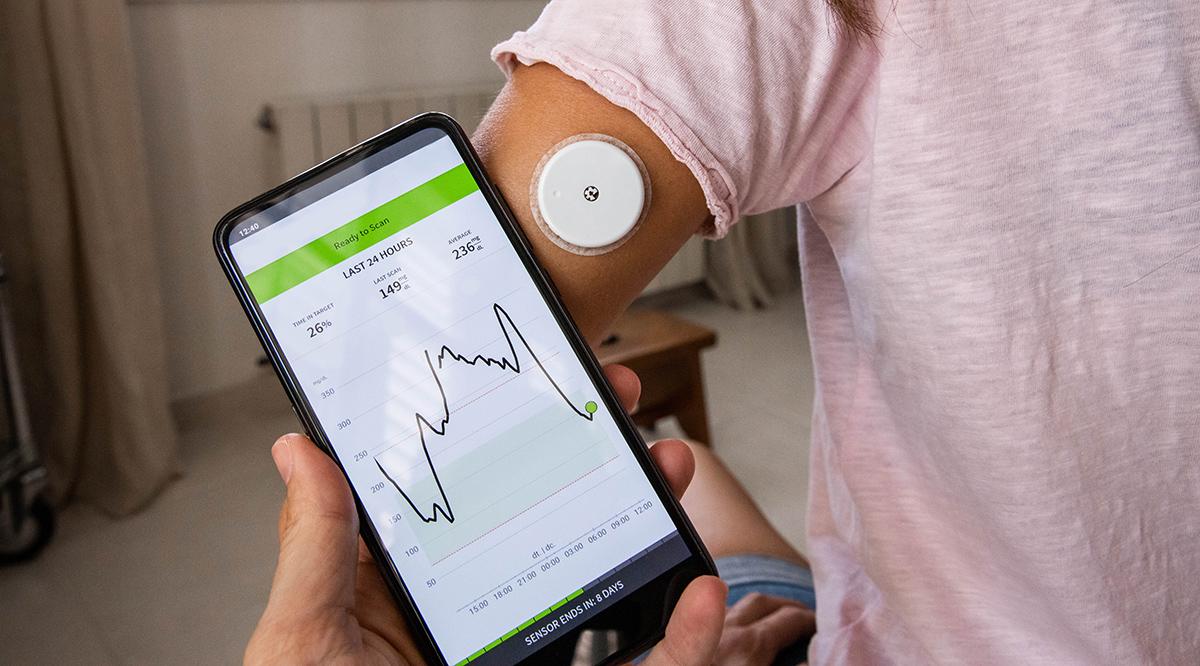Participating in clinical research can be challenging.
Often, it requires periodic visits to an academic medical center or clinic. Participants may need to take time off from work, find childcare, and travel — sometimes many miles from their homes. Many have health issues that make these tasks even more difficult. What’s more, the data collected by researchers only provide a snapshot in time that may not represent the totality of the person’s condition.
“It’s odd that we ask sick patients to come see us on our terms,” says Ray Dorsey, MD, a professor in the Department of Neurology at the University of Rochester Medical Center in New York. “Most people want to participate in research, but we make it so inconvenient.”
Dorsey and other researchers are working to change that by using personal technology, such as smartphones, smartwatches, and other “wearables” like heart and blood sugar monitors, to expand their reach — not only for collecting data, but for providing treatment.
“Currently, health care and clinical research is focused on being conducted in institutions,” he says. “In the future, [that will shift] to homes and mobile devices. These phones can measure some aspects of health really well.”
Dorsey was in the audience at Apple’s 2015 annual meeting when the company announced the introduction of ResearchKit, a software for iPhones and Apple watches that allows medical researchers to collect health data from patients using mobile apps. He remembers the crowded room erupting in applause.
His team was involved with one of the first trials using the ResearchKit mobile apps, an observational study of Parkinson’s Disease.
“We had 2,000 people enroll on the first day,” he says.
“Most people want to participate in research, but we make it so inconvenient.”
Ray Dorsey, MD
University of Rochester Medical Center
The Apple Heart Study, which set out in 2017 to identify abnormal heart rhythms in Apple Watch wearers and connect them with a clinician for follow up, enrolled more than 400,000 people.
And while there is a way to go before smartphones and wearables are commonly used in clinical research and care, Dorsey believes that the COVID-19 pandemic has sped up the process.
At the beginning of the pandemic, when many clinical trials were stalled to prevent spread of the virus, Dorsey saw an increase in participants enrolling in his app-based Parkinson’s Disease study.
“The pandemic really showed how powerful telemedicine is,” he says.
A powerful tool for studying health
Smartphones can play several roles in research and health care delivery. They can be used to collect data for observational studies, they can help with early diagnosis and detection of disease progression, and they can serve as a tool for treatment.
In their observational study through ResearchKit, Dorsey and his team enrolled people with and without Parkinson’s disease, a disorder of the central nervous system that can cause tremors and loss of dexterity. The app prompted participants to do a series of tasks three times a day, including tapping on the phone, a memory activity, walking with the phone to measure gait changes, and a voice activity. The data collected provided researchers, as well as patients, a more complete understanding of the ebb and flow of symptoms.
“It gave you a very interactive platform, and you got the results in real time,” Dorsey says.
Dorsey works with the University of Rochester Medical Center’s Center for Health and Technology, which collaborates with academic medical centers, nonprofit organizations, and health tech industry companies to advance clinical research involving innovative technology.
In its three decades of existence, the center has helped coordinate 111 clinical trials, enrolled 40,000 research participants, and advanced seven treatments now approved by the U.S. Food and Drug Administration.
“We’re just scratching the surface,” Dorsey says.
Uptake on the clinical side has been slow in some ways because much of the technology development and early patient experience resides in digital companies like Apple, Google (which acquired Fitbit), and tech startups, says Stanley Shaw, MD, PhD, a cardiologist at Brigham and Women’s Hospital and associate dean for executive education at Harvard Medical School in Boston.
“By the nature of the technology, a lot of early development happens in digital companies,” Shaw says. “It can be hard to see the unvarnished data and figure out what are the enduring lessons that are being learned.”
However, there are many apps on the market used for health research, often created in partnerships among academic medical centers, nonprofit organizations, and tech companies.
For example, Project Baseline by Verily, a collaboration that includes Google, Duke University School of Medicine, Stanford Medicine, and the American Heart Association, is a hub for more than a dozen app-based studies for general health, mental health, heart health, gut health, sleep, and COVID-19.
Ethical concerns
Although the involvement of tech companies has helped move the research forward, it’s also come with concerns about ethical issues such as patient privacy.
“As [data tracking gets] more embedded in research and care, you really have to keep an eye on the data privacy and security,” Shaw says. “That’s almost the ethical social compact that you’re having with trial participants [who] might be asked to share this data.”
Shaw points out that tech companies operate with different objectives, business propositions, and time scales than researchers and clinicians, who may require different study designs and evidence standards to determine if a digital tool is useful in health care.
“Framing research questions that are important to advancing our understanding of disease and our understanding of the best ways to take care of people … that kind of mission will always fall to academic and clinical researchers,” Shaw says.
Researchers should also be aware of possible bias in the research.
“Digital technologies may be able to decrease accessibility limitations, [but] they can also introduce or exacerbate different kinds of bias,” Shaw says. “There’s a whole field that has sprung up about ethical issues and bias related to digital technologies.”
“Framing research questions that are important to advancing our understanding of disease and our understanding of the best ways to take care of people … that kind of mission will always fall to academic and clinical researchers.”
Stanley Shaw, MD, PhD
Brigham and Women’s Hospital and Harvard Medical School
Although more than 80% of households in the United States own a smartphone, many people in rural or low-income communities do not have reliable cellular data plans and some people are not comfortable using smartphones. The initial research apps were limited to adults with recent iPhones who understand English, which skewed the participants to be disproportionately wealthy and more highly educated, according to an article in Academic Medicine, the AAMC’s journal. Furthermore, bias can be introduced in the development of the app, such as time burden of data entry or interfaces that appeal more to certain demographics, as the Center for Democracy and Technology points out.
“I think there are ways to overcome these biases as long as they are recognized intentionally,” Shaw says. “The care taken to things like technical supports, getting people started on using the app, providing the phone, not requiring a cellular data plan, using different languages — these are all addressable.”
Another barrier to the wider implementation of smartphones in clinical research is what Dorsey refers to as “the innovator’s dilemma.” Researchers who have been in the field for years are often slow to adopt new technologies and practices into their work.
“Medical centers are designed to have patients come to them,” he says.
Dorsey believes that the researchers and physicians who are entering the field today are more open to using digital tools and disrupting the way things have been done in the past.
“I think we’re at the beginning of a transformation in care and research,” he says. “We need to seize it.”

